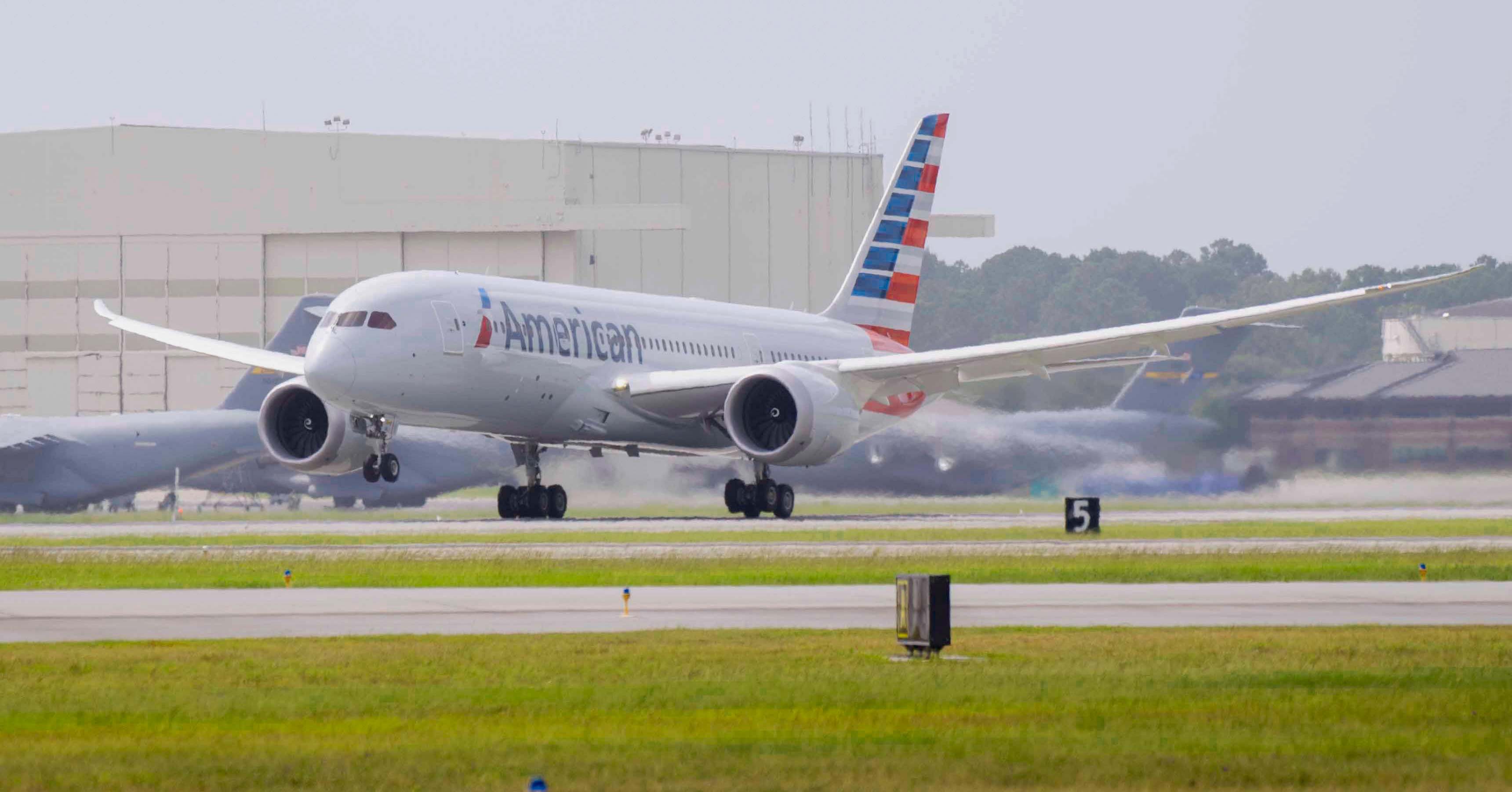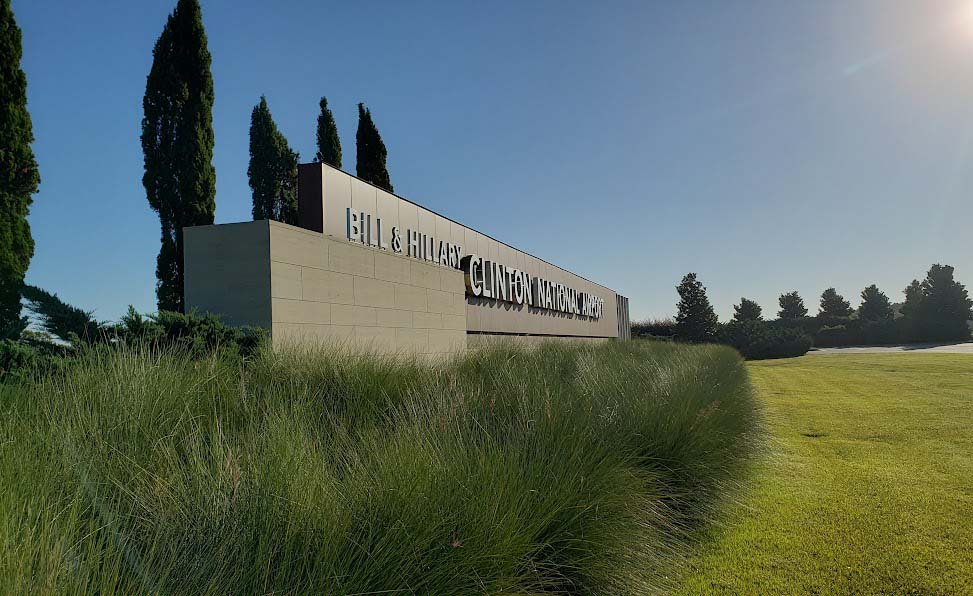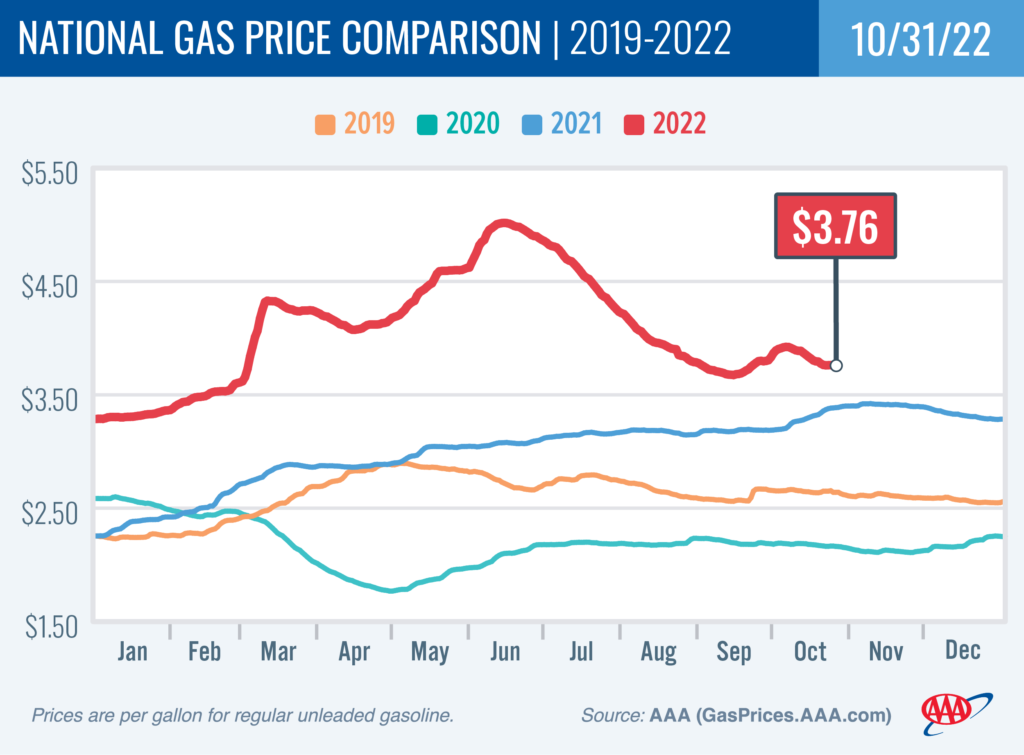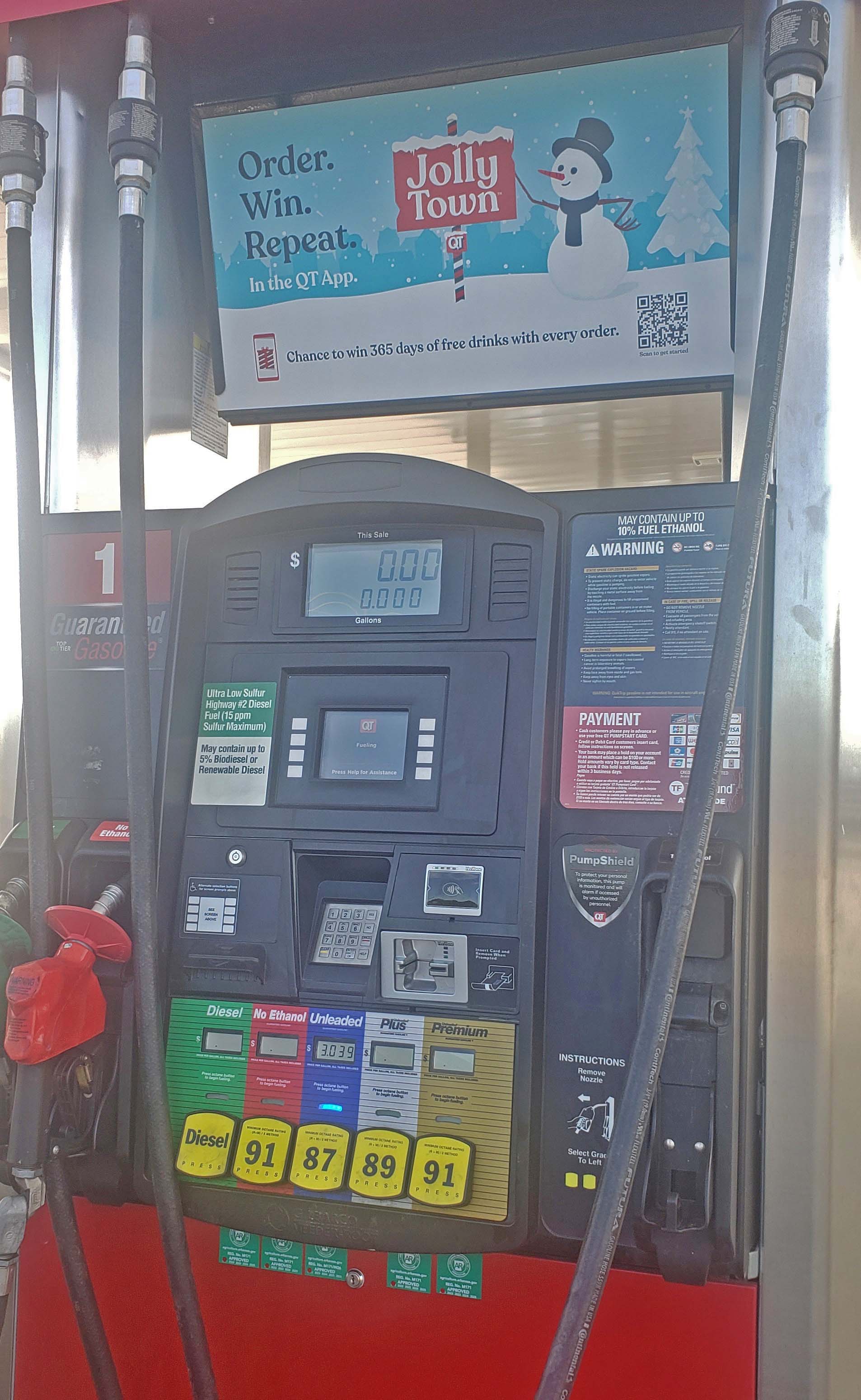Holiday Highlights: Consumers eager to hit the road to celebrate Thanksgiving, Christmas
November 7-13, 2022
By The Daily Record Staff
After two years of having holiday celebrations upended due to the COVID-19 pandemic, Americans are eager to get back to their larger holiday gatherings despite inflation and a tepid economy. For those that heading to grandma for the upcoming Thanksgiving Day or Christmas holidays, there is likely good news and bad news depending on the place, time and mode of travel.
In a newly released report by the nonpartisan Consumer Board, 30% of Americans plan on traveling away from home this holiday season, about the same last year. Of those, 47% intend to drive, with slightly less—43%—choosing to fly.
“Consumers are entering the holidays in a somewhat cautious mood this year,” said Lynn Franco, senior director of economic indicators at The Conference Board. Through October, The Conference Board’s highly watched Consumer Confidence Index decreased in October after back-back-back monthly gains in as economic uncertainty and inflation continue to afflict consumers.
“Consumers appear to be rebalancing their budgets and priorities by reducing their gift-giving circles to help offset the higher costs of non-gift items, in particular food. Given this challenging landscape, retailers have already begun countering by offering shoppers earlier than usual discounts, sales, and incentives,” said Franco.
Even though holiday travel plans are returning are returning to a sense of normalcy, consumer may find themselves still frustrated this season as recently release airline operational data compiled for the month of August shows that complaints are well above pre-pandemic levels.
On Oct. 26, the U.S. Department of Transportation released its new Air Travel Consumer Report (ATCR) on consumer complaints received, mishandled baggage, and mishandled wheelchairs and scooters. Through August, there was a 6% increase in air travel service complaints and complaints are more than 320% above pre-pandemic levels. The previous report from July showed a 16.5% increase from June to July, and complaints were more than 260% above pre-pandemic levels.
The ATCR is designed to assist consumers with information on the quality of services provided by airlines. DOT remains committed to ensuring airline passengers are treated fairly and is concerned about recent flight cancellations and flight disruptions.
During the summer, the Department rolled out a new airline customer service dashboard to help the public determine what they are owed when a flight is canceled or delayed because of an airline issue. Because of the creation of this dashboard and Transportation Secretary Pete Buttigieg is asking airlines to improve their service, nine airlines now guarantee meals and hotels. Previously, none of the ten largest U.S. airlines guaranteed meals or hotels when a significant delay or cancellation was within the airlines control.
The Transportation Department is also taking other actions to address flight delays and cancellations, including monitoring airlines’ operations to ensure that airlines are not engaging in unrealistic scheduling of flights and are complying with aviation consumer protection requirements. This includes ensuring consumers receive prompt refunds if they are no longer interested in continuing their travel when their flights are cancelled or significantly changed.
DOT uses the data from the ATCR, consumer complaints, and other information it secures from the airlines to inform its enforcement activities and the adequacy of existing rules.
Through August, the 598,166 flights operated in between months were 84.9% of the 704,553 flights operated in pre-pandemic August 2019. Operated flights in August 2022 were up 0.91% year-over-year from the 592,760 flights operated in August 2021 and down 1.6% month-over-month from the 607,657 flights operated in July 2022.
In August 2022, the 10 U.S. carriers reported 613,649 scheduled domestic flights, 15,483 (2.5%) of which were canceled. In August 2021, the same airlines reported 611,494 scheduled domestic flights, 18,734 (3.1%) of which were canceled. In July 2022, airlines scheduled 618,790 domestic flights, of which 11,133 (1.8%) were canceled. In August 2019, airlines scheduled 717,456 domestic flights, of which 12,903 (1.8%) were canceled.
In August 2022, reporting U.S. carriers posted an on-time arrival rate of 75.6% up from 74.9% in July 2022 and down from 77.6% in pre-pandemic August 2019. The year-to-date on-time arrival rate for 2022 is 75.8%. Delta, Alaska Airlines and Spirit Airlines had the highest on-time arrives rates between July and August at 82.95, 82.3% and 81.6%, respectively. JetBlue Airways (65.9%), Allegiant Air (66.5%), and Southwest Airlines (67.7%) had the lowest arrival rates at the end of August.
In August 2022, the top U.S. airlines canceled 2.5% of their scheduled domestic flights, lower than the rate 3.1% in August 2021 and higher than the rate of 1.8% in pre-pandemic August 2019.
Consumer complaints
In August 2022, DOT received 7,243 complaints about airline service from consumers, up 6.0% from the 6,831 complaints received in July 2022 and up 322.8% from the 1,713 complaints received in pre-pandemic August 2019. Of the 7,243 complaints, 4,052 (55.9%) were against U.S. carriers, 2,692 (37.2%) were against foreign air carriers, and 497 (6.9%) were against travel companies.
Flight problems was the highest category of the complaints received in August 2022. Of the 7,243 complaints received, 2,321 (32.0%) concerned cancellations, delays, or other deviations from airlines’ schedules.
OACP routinely monitors airlines with widespread cancellations or delays to ensure that airlines are not engaging in unrealistic scheduling of flights and to make clear their obligation to promptly refund passengers who choose not to accept the alternative offered for a canceled or significantly changed flight.
The new DOT rules also remind them of their obligation to adhere to their customer service plan that identifies the services that the airline provides to mitigate passenger inconveniences resulting from flight cancellations and misconnections. The Department monitors airlines’ actions and reviews complaints that it receives against airlines to ensure that consumers’ rights are not violated.
Baggage was the second highest category of the complaints received in August 2022. Of the 7,243 complaints received, 1,675 (23.1%) concerned baggage issues. Of 1,675 baggage complaints, 1079 were against foreign air carriers (64.4%) and 596 (35.6%) were against U.S. carriers. OACP has contacted the carriers that experienced significant spikes in the number of baggage complaints to obtain information on the reasons for the spikes and to ensure that airlines are complying with the baggage requirements, including reimbursing passengers for reasonable, verifiable and actual expenses that they may incur when their bags are delayed.
Also, of the 7,243 complaints received in August 2022, 1,432 (19.8%) concerned refunds. OACP continues to communicate with airlines and travel companies that receive refund complaints to ensure compliance with the refund requirements. Thousands of passengers who were initially denied refunds and contacted DOT have since received the required refunds.
Last year, OACP assessed the largest fine in the Department’s history for consumer protection violations against a foreign air carrier for extreme delays in providing refunds to thousands of consumers for flights to or from the U.S. that the carrier canceled or significantly changed.
Airlines in August also reported 72 tarmac delays of more than three hours on domestic flights, up --- from 17 tarmac delays reported in July 2022. In August 2022, airlines reported five tarmac delays of more than four hours on international flights, compared to four tarmac delays reported in July 2022.
Airlines are required to have and adhere to assurances that they will not allow aircraft to remain on the tarmac for more than three hours for domestic flights and four hours for international flights without providing passengers the option to deplane, subject to exceptions related to safety, security, and Air Traffic Control related reasons. An exception also exists for departure delays if the airline begins to return the aircraft to a suitable disembarkation point to deplane passengers by those times.
U.S. carriers handled 41 million bags and posted a mishandled baggage rate of 0.64% in August, equal to the July 2022 rate of 0.64% and higher than the pre-pandemic August 2019 rate of 0.61%. In the previous three calendar year reports (2019 to 2021), DOT calculated the mishandled baggage rate based on the number of mishandled bags per 1,000 checked bags.
In August 2022, U.S. carriers reported checking 67,840 wheelchairs and scooters and mishandling 1,057 for a rate of 1.56% mishandled wheelchairs and scooters, lower than the rate of 1.63% mishandled in July 2022 and below the rate of 1.58% mishandled in pre-pandemic August 2019.
For the second quarter of 2022, the 10 U.S. reporting marketing carriers posted an involuntary denied boarding, or bumping, rate of 0.36 per 10,000 passengers, higher than the rate of 0.17 in the second quarter of 2021 and above the rate of 0.31 in the second quarter of 2019.
Pump prices trending lower
The good news for those traveling during the holiday season is that gas prices are drifting lower President Joe Biden on Oct. 19 announced plans to release another 15 million barrels of oil from the reserve in December.
“Global recession fears coupled with the Biden Administration’s plan to continue tapping the Strategic Petroleum Reserve into December has helped temper oil prices,” said Andrew Gross, spokesman for the former American Automobile Association (AAA). “This will help take the pressure off pump prices, benefitting drivers and their wallets.”
As of Nov. 1, the national average pump price continued its recent trend by dipping three cents over the past week to hit $3.76. Tepid domestic gas demand and waffling global oil prices are the main reasons, although much lower West Coast gas prices are playing a part too.
“The recent period of tight oil inventory pushing prices higher on the West Coast is over as regional refineries completed needed maintenance,” said Gross. “The average gas price in California, while still high compared to the rest of the country, is 85 cents cheaper than its peak in early October. This drop has taken pressure off the national average price.”
According to data from the Energy Information Administration (EIA), gas demand rose slightly from 8.68 million barrels per day (b/d) to 8.93 million b/d last week, and total domestic gasoline stocks decreased from 209.4 million barrels to 207.9 million. Although gasoline demand is up slightly, it remains nearly 400,000 barrels lower than this time last year. Fluctuating oil prices and low demand contribute to the national average prices moving downward.
Today’s national average of $3.76 is three cents lower than a month ago and 36 cents more than a year ago. At the same, Arkansas is still among the top 10 least expensive gasoline markets at $3.24 per gallon for regular unleaded, which is 18 cents above year-ago levels.
Meanwhile, pump prices in the state’s metropolitan areas range from a low of $3.17 in the Little Rock-North Little Rock to the highest recorded average of $3.31 at the Arkansas/Tennessee state line in the West Memphis area.
According to GasBuddy.com, drivers in some parts of Arkansas are seeing well below the U.S. and state average. For example, the gasoline prices wars between Costco and Sam’s Club in west Little Rock is pushing pump prices well below the $3 level as warehouse shoppers are paying only $2.94 per gallon to fill up their tanks.
In northeast Arkansas, drivers are also seeing prices near or slightly below $2.90 in Jonesboro, Bono and Paragould.
Photo Captions:
1. Consumers eager to hit the road to celebrate Thanksgiving, Christmas
2. Anxious holiday vacationers eager to travel after two-year pandemic lull
3. As of Nov. 1, the national average pump price continued its recent trend by dipping three cents over the past week to hit $3.76. Fluctuating oil prices and low demand contribute to the national average prices moving downward.







